 by our College Data Analytics Team
by our College Data Analytics TeamDrew total enrollment is approximately 2,229 students. 1,603 are undergraduates and 308 are graduate students.
Male/Female Breakdown of Undergraduates
The full-time Drew undergraduate population is made up of 58% women, and 42% men.
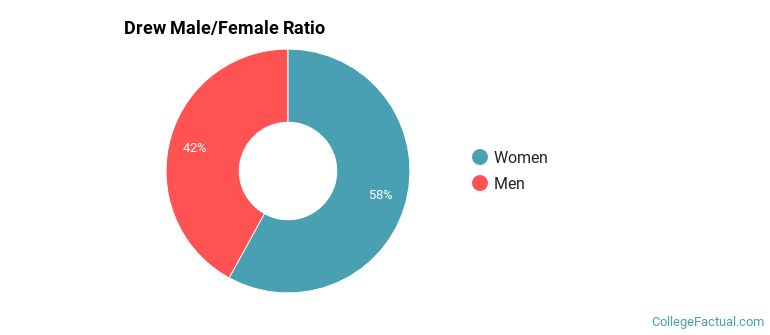
For the gender breakdown for all students, go here.
Drew Racial/Ethnic Breakdown of Undergraduates
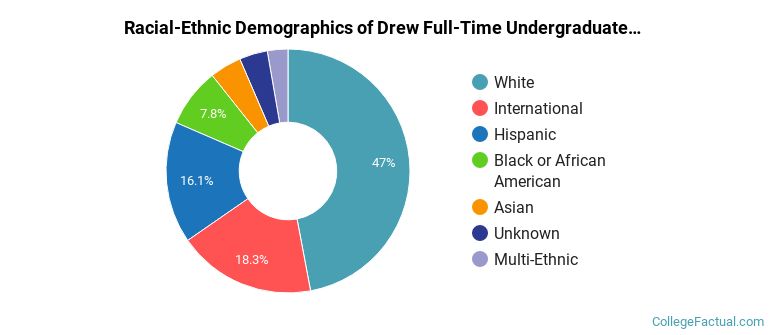
| Race/Ethnicity | Number |
|---|---|
| White | 757 |
| International | 269 |
| Hispanic | 265 |
| Black or African American | 136 |
| Unknown | 70 |
| Asian | 62 |
| Multi-Ethnic | 41 |
| Native Hawaiian or Pacific Islander | 0 |
See racial/ethnic breakdown for all students.
Male/Female Breakdown of Graduate Students
About 52% of full-time grad students are women, and 48% men.
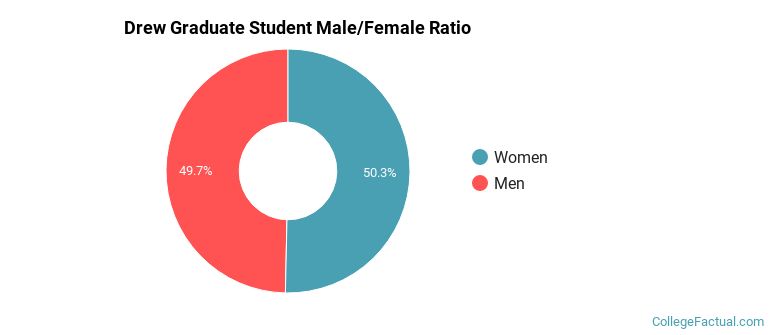
For the gender breakdown for all students, go here.
Drew Racial-Ethnic Breakdown of Graduate Students
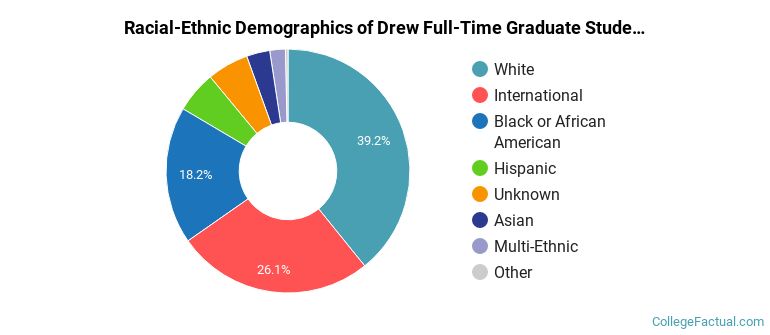
| Race/Ethnicity | Number |
|---|---|
| White | 125 |
| International | 81 |
| Black or African American | 46 |
| Unknown | 21 |
| Asian | 13 |
| Hispanic | 11 |
| Multi-Ethnic | 8 |
| Native Hawaiian or Pacific Islander | 1 |
See racial/ethnic breakdown for all students.
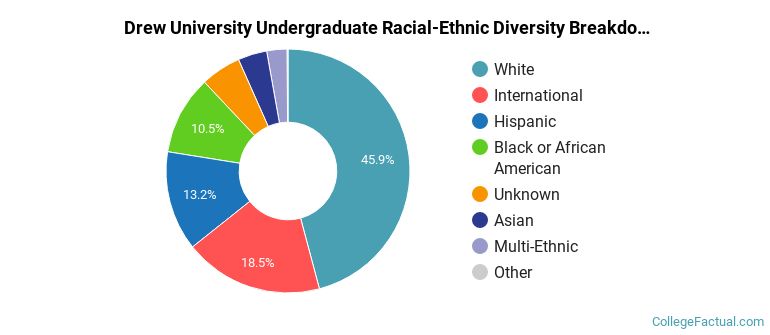
| Race/Ethnicity | Number |
|---|---|
| White | 1,018 |
| International | 405 |
| Hispanic | 293 |
| Black or African American | 238 |
| Unknown | 121 |
| Asian | 88 |
| Multi-Ethnic | 59 |
| Native Hawaiian or Pacific Islander | 2 |
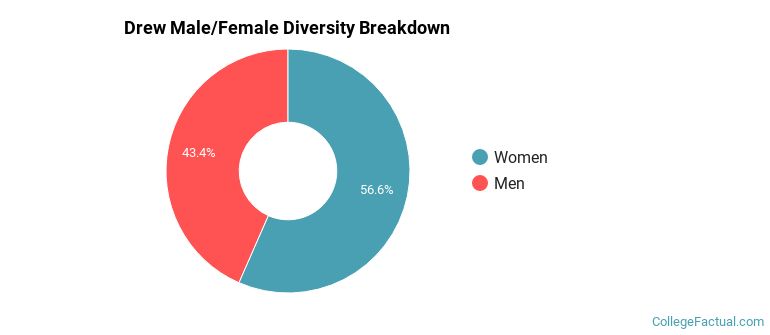
There are approximately 1,256 female students and 973 male students at Drew.
Drew ranks 561 out of 2,183 when it comes to geographic diversity.
39.75% of Drew students come from out of state, and 7.71% come from out of the country.
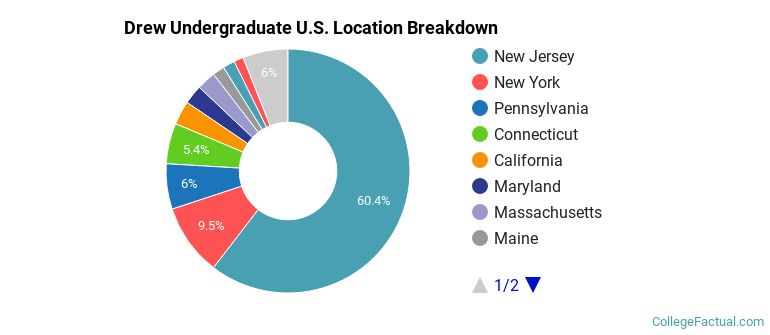
The undergraduate student body is split among 25 states (may include Washington D.C.). Click on the map for more detail.
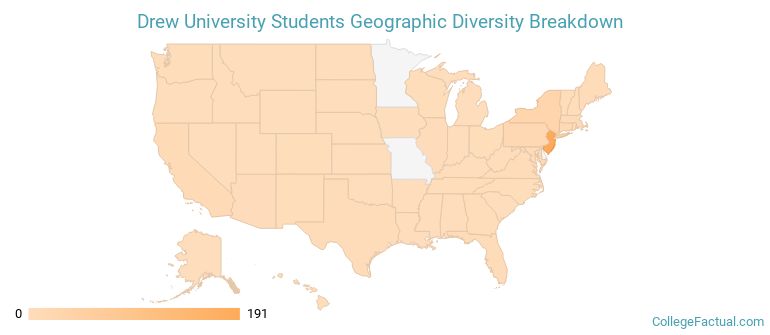
| State | Amount |
|---|---|
| New Jersey | 191 |
| New York | 30 |
| Pennsylvania | 19 |
| Connecticut | 17 |
| California | 10 |
Students from 61 countries are represented at this school, with the majority of the international students coming from China, South Korea, and Pakistan.
Learn more about international students at Drew.
A traditional college student is defined as being between the ages of 18-21. At Drew, 61.03% of students fall into that category, compared to the national average of 60%.
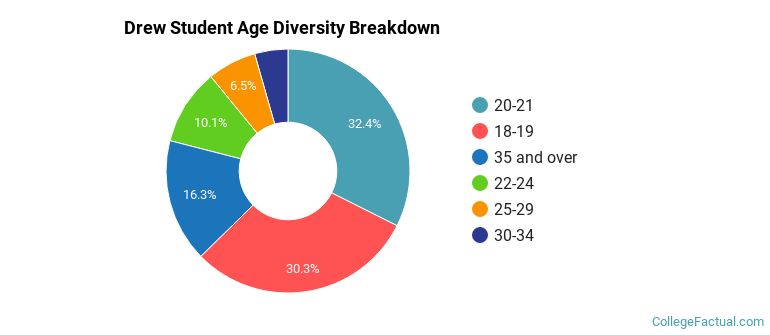
| Student Age Group | Amount |
|---|---|
| 20-21 | 668 |
| 18-19 | 624 |
| 35 and over | 337 |
| 22-24 | 208 |
| 25-29 | 134 |
| 30-34 | 91 |
| Under 18 | 0 |
Footnotes
*The racial-ethnic minorities count is calculated by taking the total number of students and subtracting white students, international students, and students whose race/ethnicity was unknown. This number is then divided by the total number of students at the school to obtain the racial-ethnic minorities percentage.
References
Department of Homeland Security Citizenship and Immigration Services
Image Credit: By Jim.henderson under License
Find out how College Factual created their Diversity Rankings.